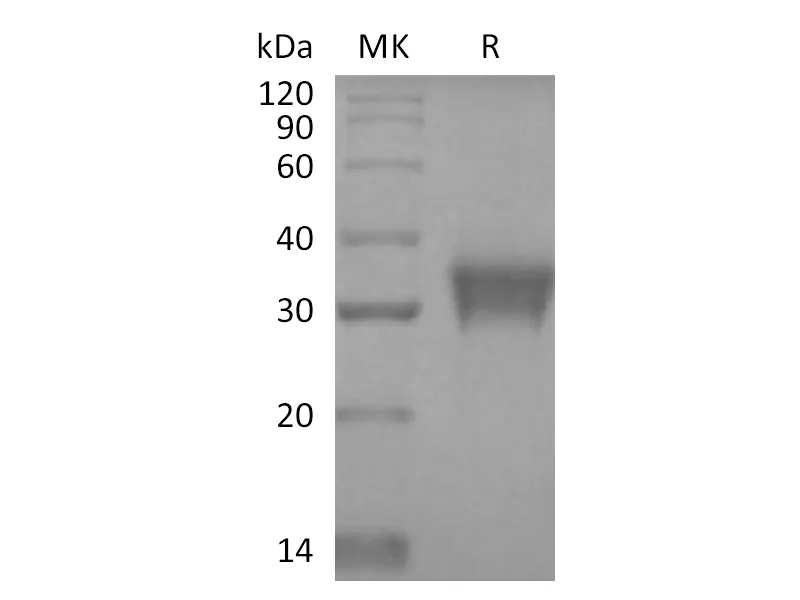
Size2:50μg price2:$378
Size3:500μg price3:$1890
| Name | Recombinant Human STC-1 (C-6His) |
| Purity | Greater than 95% as determined by reducing SDS-PAGE |
| Endotoxin level | <1 EU/µg as determined by LAL test. |
| Construction | Recombinant Human Stanniocalcin 1 is produced by our Mammalian expression system and the target gene encoding Thr18-Ala247 is expressed with a 6His tag at the C-terminus. |
| Accession # | P52823 |
| Host | Human Cells |
| Species | Human |
| Predicted Molecular Mass | 26.9 KDa |
| Buffer | Lyophilized from a 0.2 μm filtered solution of PBS, pH 7.4. |
| Form | Lyophilized |
| Shipping | The product is shipped at ambient temperature.Upon receipt, store it immediately at the temperature listed below. |
| Stability&Storage | Store at ≤-70°C, stable for 6 months after receipt.Store at ≤-70°C, stable for 3 months under sterile conditions after opening. Please minimize freeze-thaw cycles. |
| Reconstitution | Always centrifuge tubes before opening.Do not mix by vortex or pipetting.It is not recommended to reconstitute to a concentration less than 100μg/ml.Dissolve the lyophilized protein in distilled water.Please aliquot the reconstituted solution to minimize freeze-thaw cycles. |
Alternative Names
Stanniocalcin 1; stanniocalcin-1; STC1; STC-1; STCSTC-1
Background
Stanniocalcin 1 (STC-1) is a homodimeric glycoprotein hormone that is involved in calcium and phosphate homeostasis. It was originally identified in bony fishes, where elevation of calcium in serum causes the release of STC from the endocrine glands called the corpuscles of Stannius. STC-1 inhibits the breakdown of PAPP-A, protects cancer cells from apoptosis, reduces tumor size of liver cancers, promotes osteoblast differentiation and inhibits longitudinal bone growth directly at the growth plate. It is also a biomarker of brain and lung cancer progression. STC1 signals through inhibitory G-protein modulates CGRP receptor spatial localization during osteoblastogenesis and may function as a regulatory factor interacting with calcitonin peptide members during bone formation.
Note
For Research Use Only , Not for Diagnostic Use.
